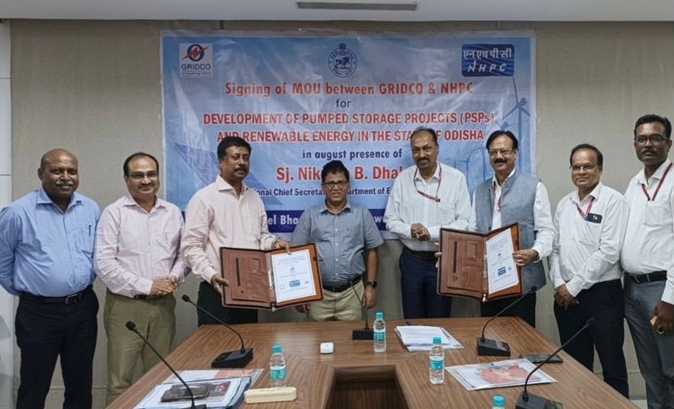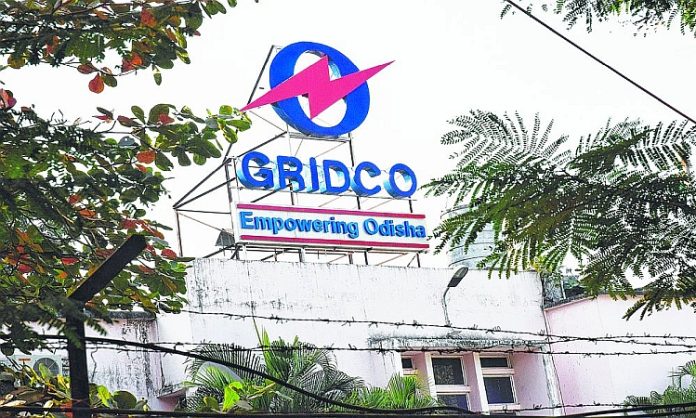New Delhi: The NHPC Limited, the largest hydropower development organisation in India, has signed a memorandum of understanding with Gridco Limited, Odisha, for development of pumped storage projects (PSPs) and renewable energy in the state.
The MoU envisages setting up self-identified PSPs of at least 2,000 MW and renewable energy projects (ground-mounted solar projects / floating solar projects) of at least 1,000 MW in the state.
Also Read: Jharkhand to get new Solar Policy, aims 4000MW green energy in 5yrs
The MoU was signed on June 23 by executive director (strategy business development and  consultancy), NHPC Ltd, Rajat Gupta and managing director, Gridco Limited, Trilochan Panda in the presence of additional chief secretary, energy, government of Odisha cum chairperson, Gridco Ltd, Nikunja B Dhal, director (projects), NHPC Limited, Biswajit Basu and other senior officers of both organizations.
consultancy), NHPC Ltd, Rajat Gupta and managing director, Gridco Limited, Trilochan Panda in the presence of additional chief secretary, energy, government of Odisha cum chairperson, Gridco Ltd, Nikunja B Dhal, director (projects), NHPC Limited, Biswajit Basu and other senior officers of both organizations.
The Odisha government recently issued its latest state renewable energy policy 2022 to attract investments in clean energy in the state, with a focus on new areas such as green hydrogen, green ammonia, floating solar, and wind energy, among others.
The state, which has around 627 MW of installed capacity of renewable energy, plans to increase this to 10,000 MW by 2030.
Also Read: Coal may store hydrogen, power clean energy economy: Research
Odisha, currently one of the leading coal-producing states in India, has also made a provision for energy transition in this policy for the welfare of people associated with coal mining to transition in a smooth manner as coal mining is like to be phased out in the future.
What is pumped storage plants?
Pump storage plants are, for the present, the solution for large scale storage of electricity. India would need more and more PSPs as the share of electricity from renewables goes up towards 50%. Fortunately, this is a mature and proven technology; use electricity to pump up water in a hydro power plant and then use the pumped-up water to fall and generate electricity when needed.
It needs modest civil works at a hydropower dam in creating a downstream reservoir to store water for a day, and the installation of reversible turbines which can pump water up and also generate electricity when the water comes down. India has an identified PSP potential of 93GW. A few plants have been built and are running. In addition, there is the potential of developing off river PSPs.
Also Read: Govt extends solar park projects’ scheme deadline by two years
Here two water reservoirs are created artificially at different heights where topography makes this feasible. The water from the lower reservoir is pumped up to store energy and the water falls to generate electricity when needed.




